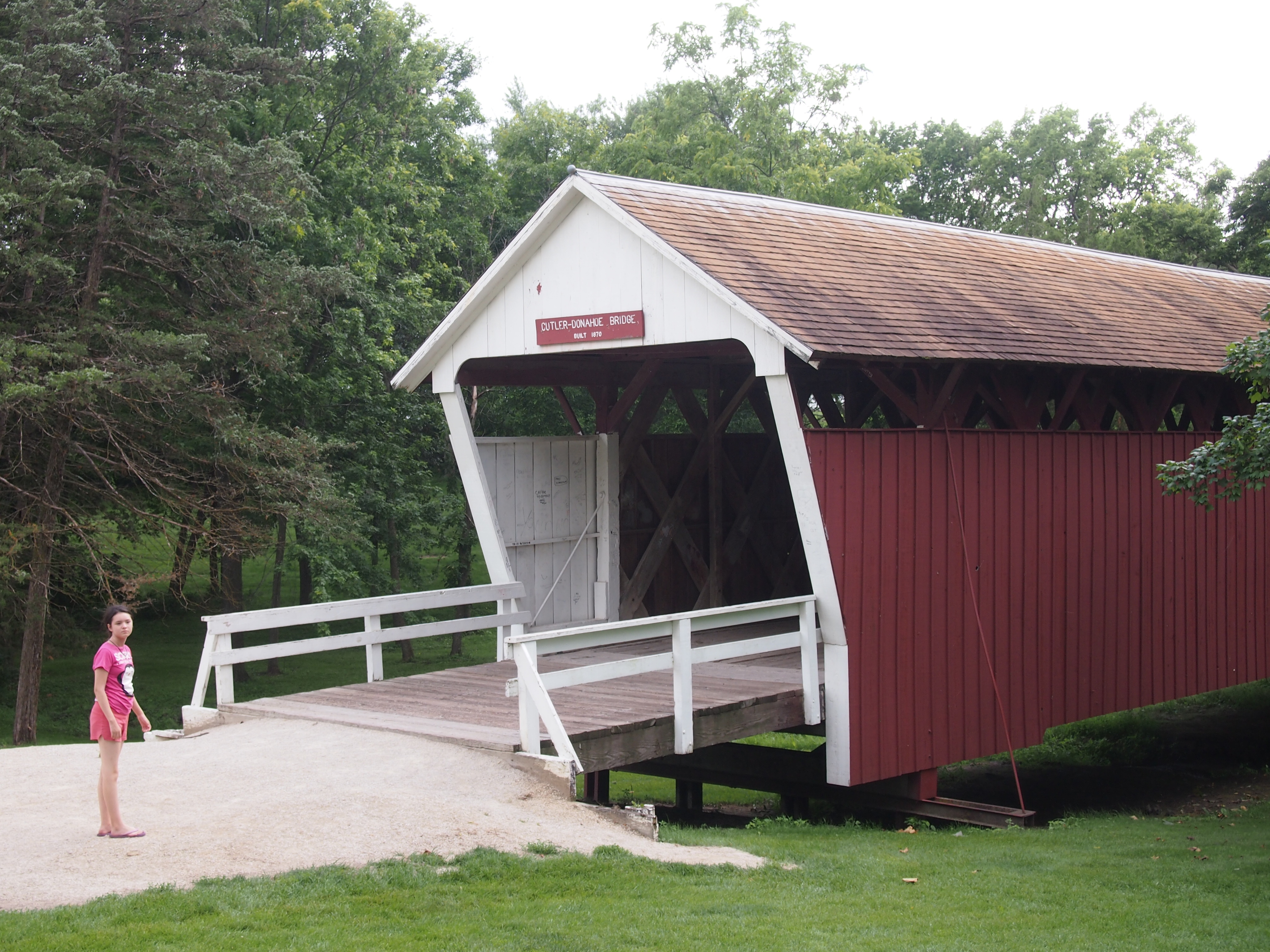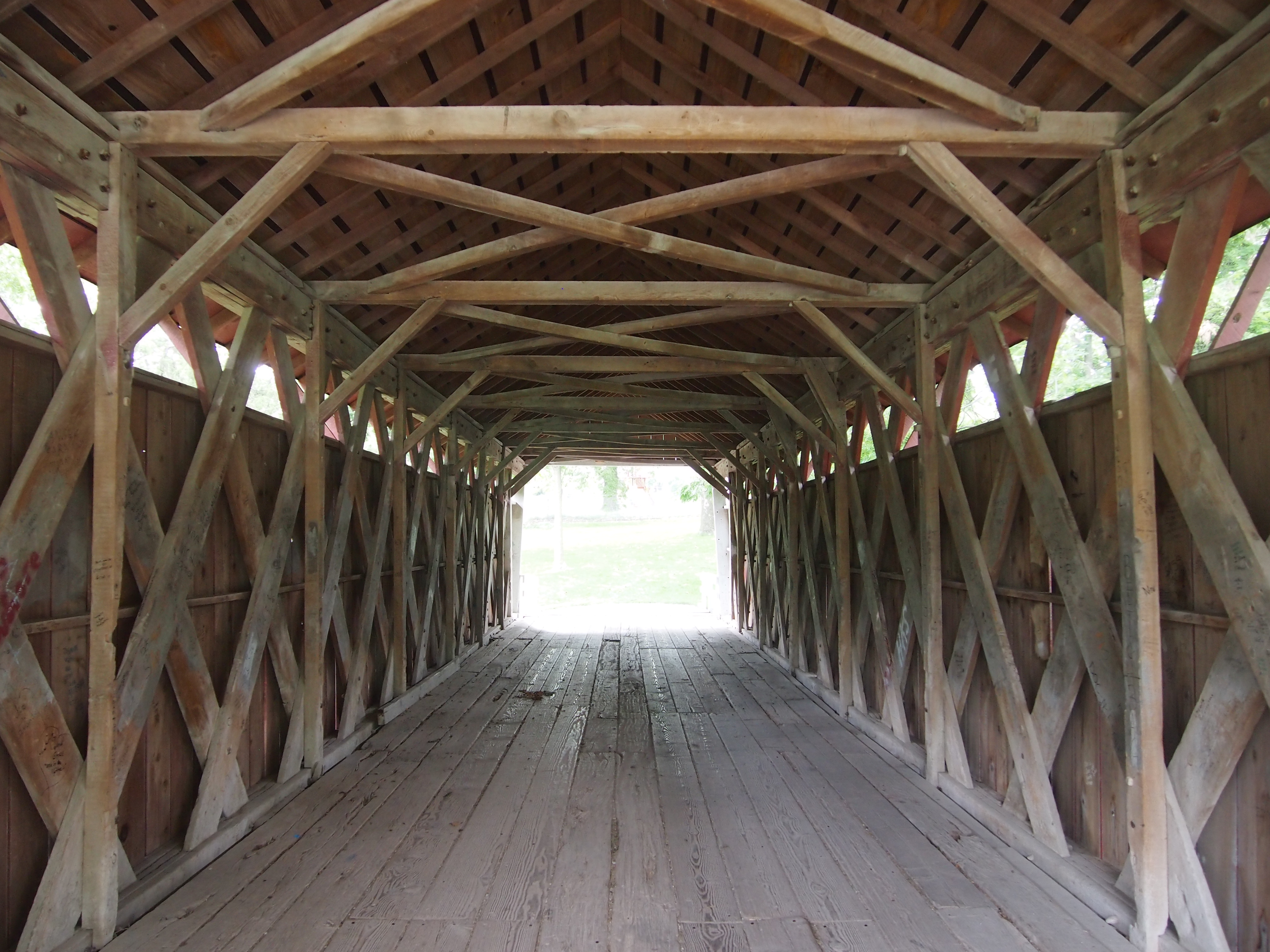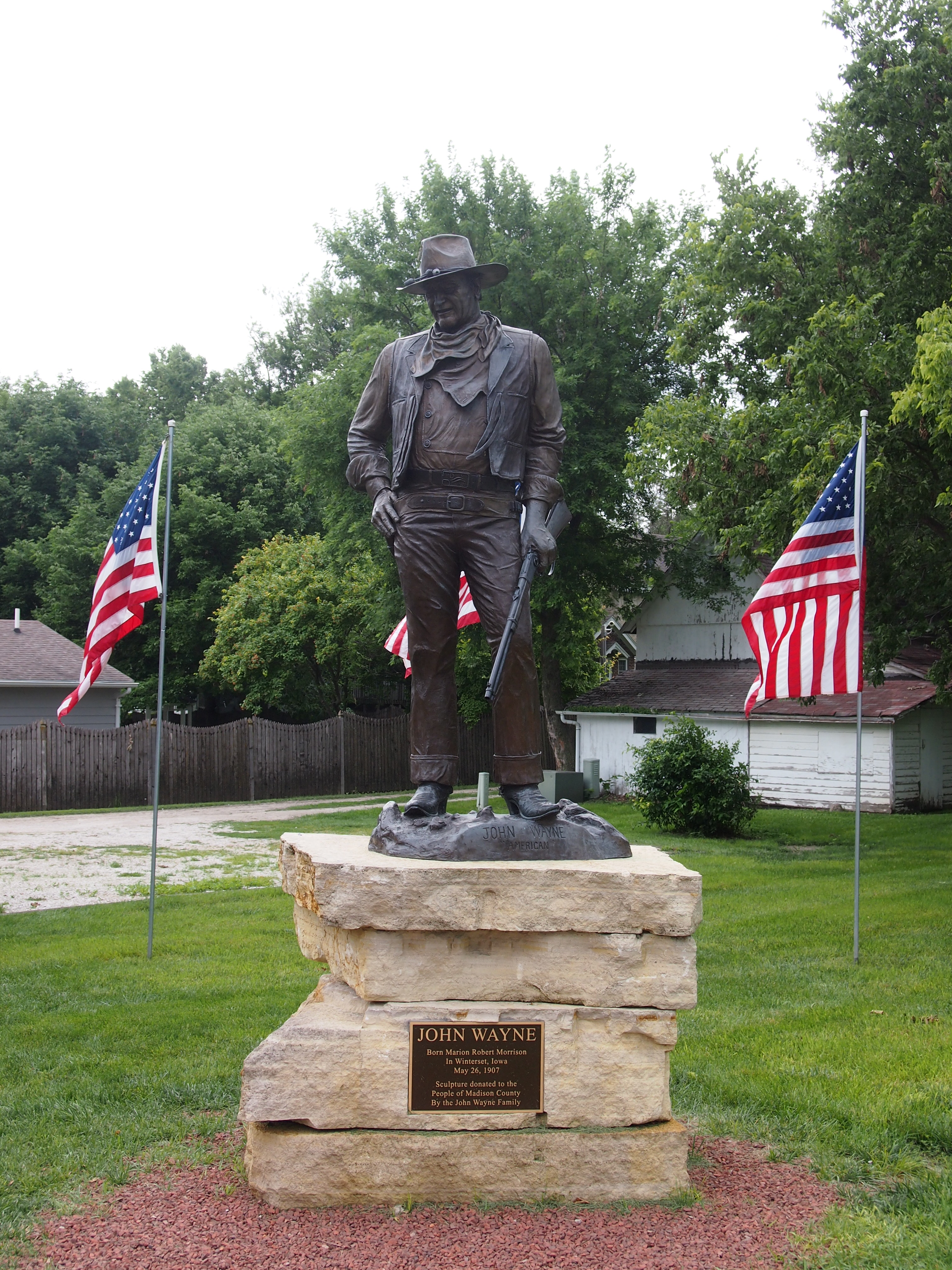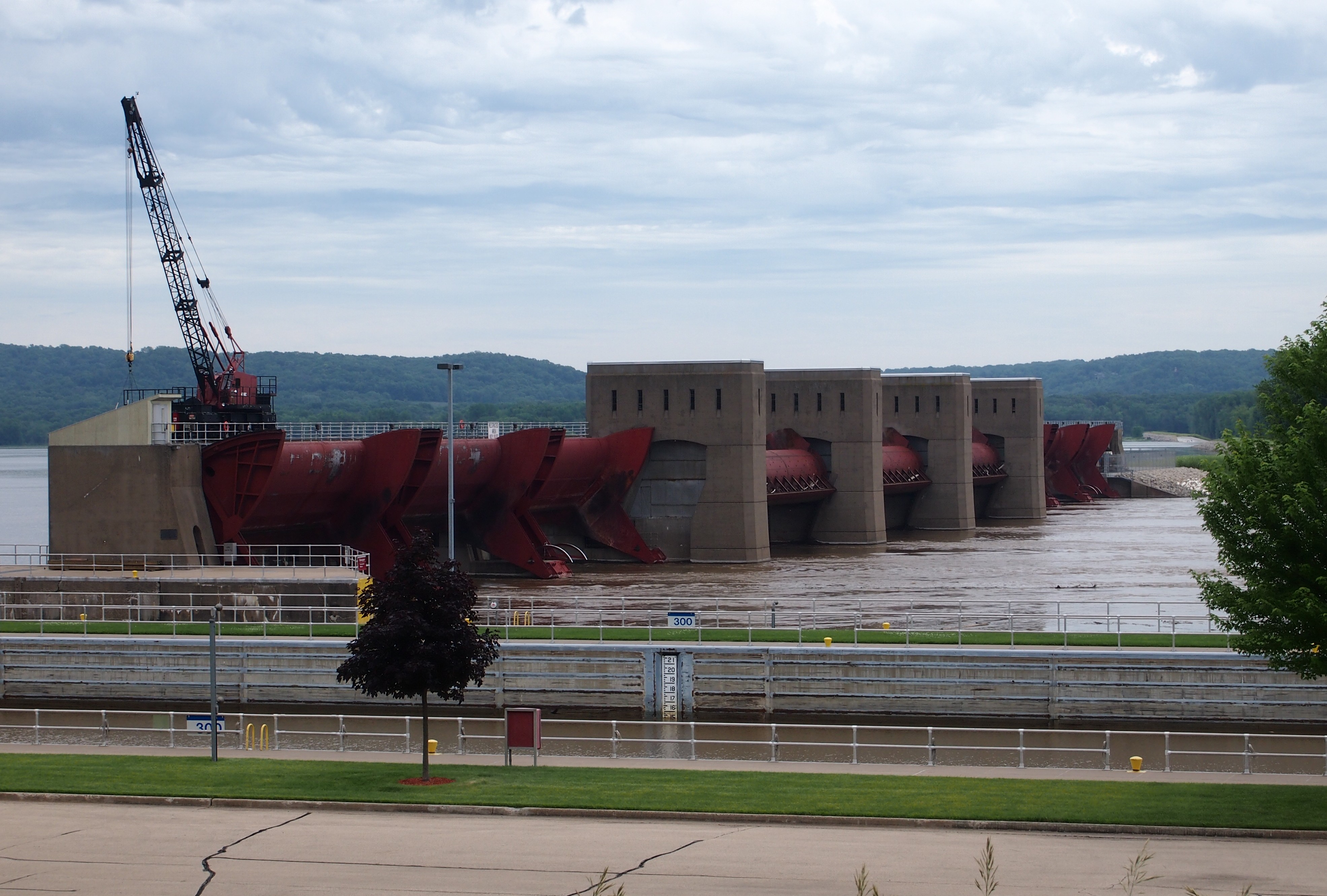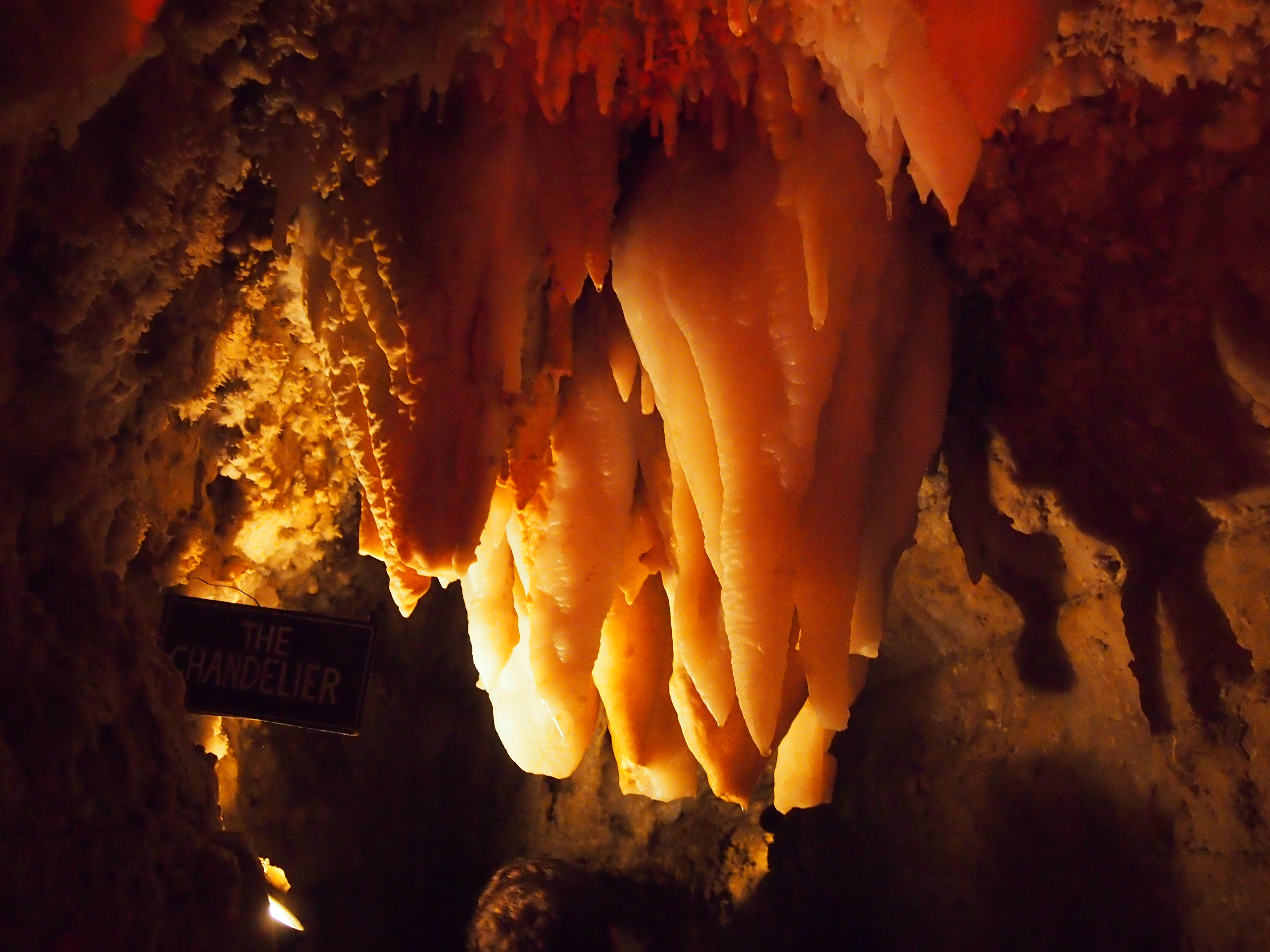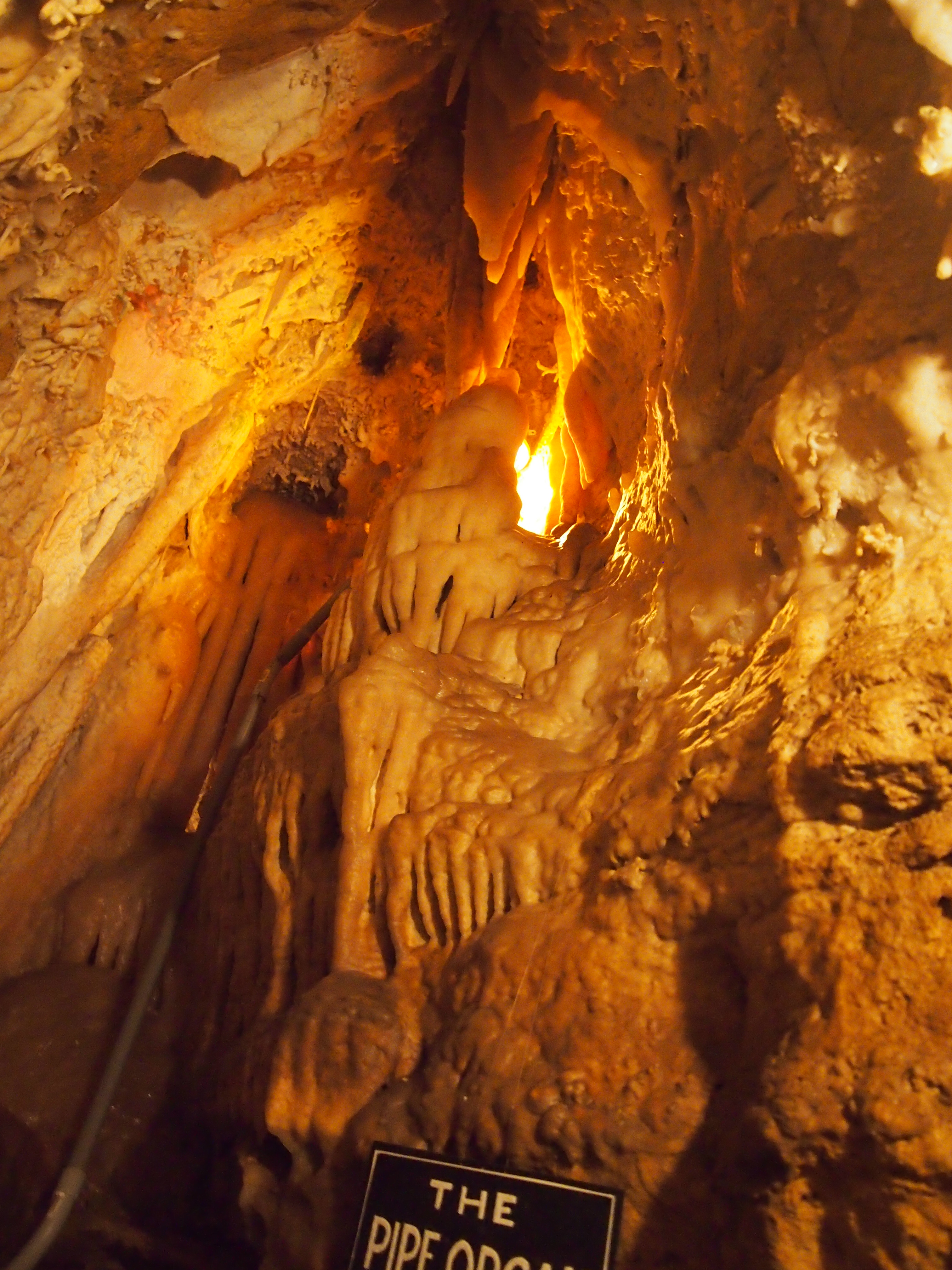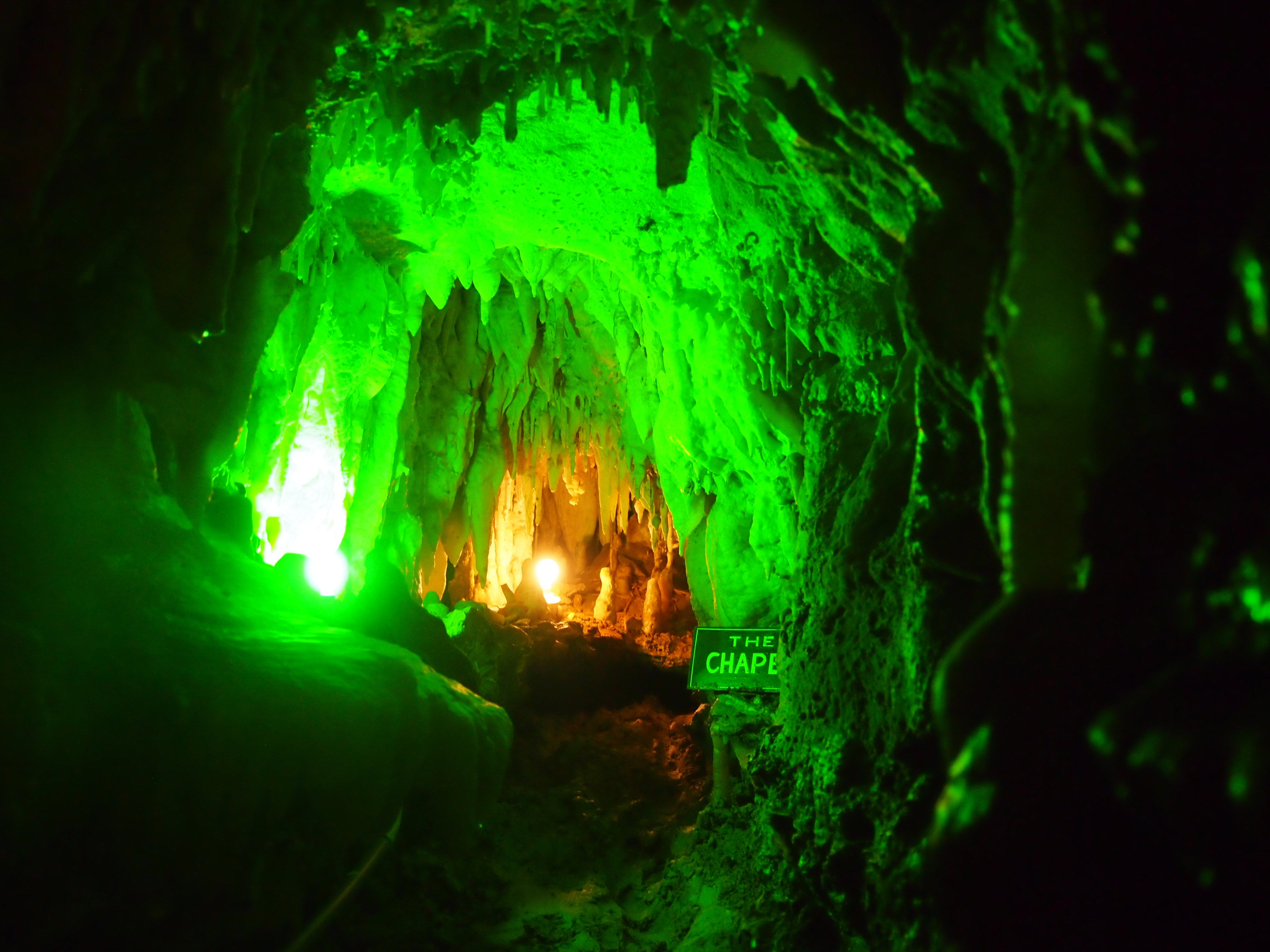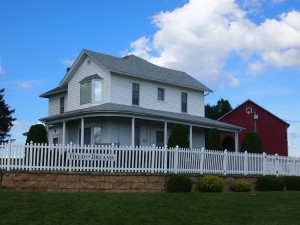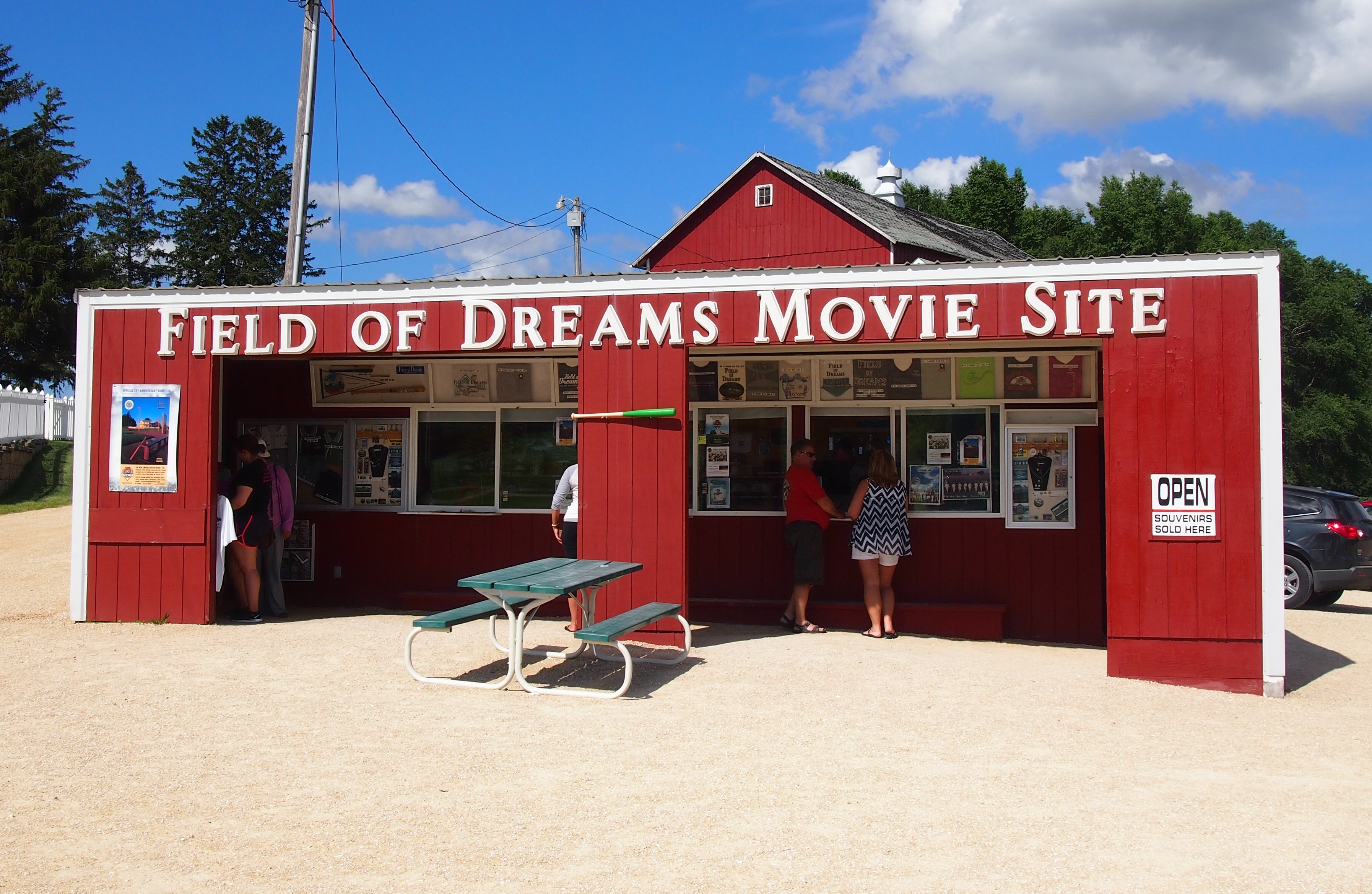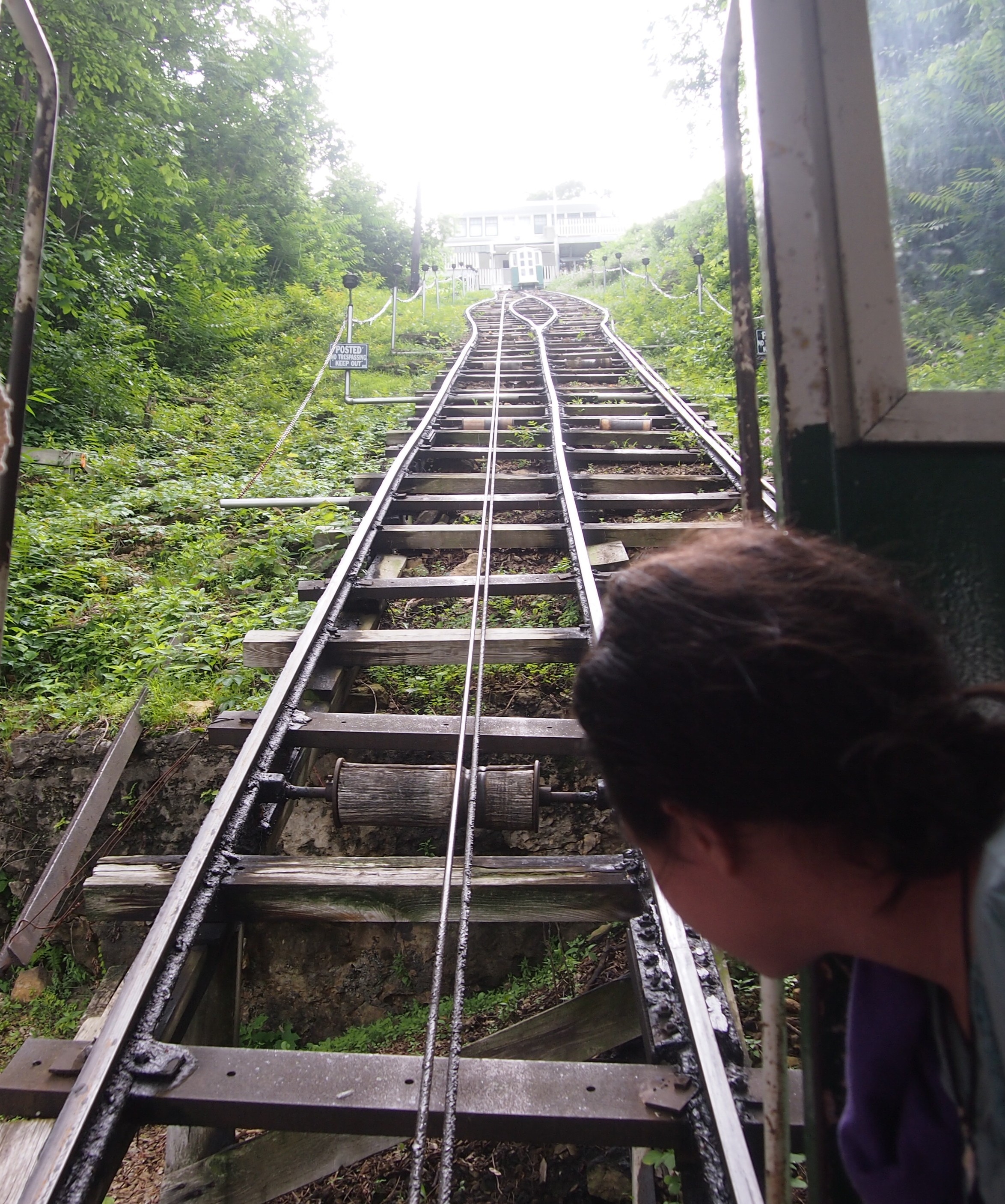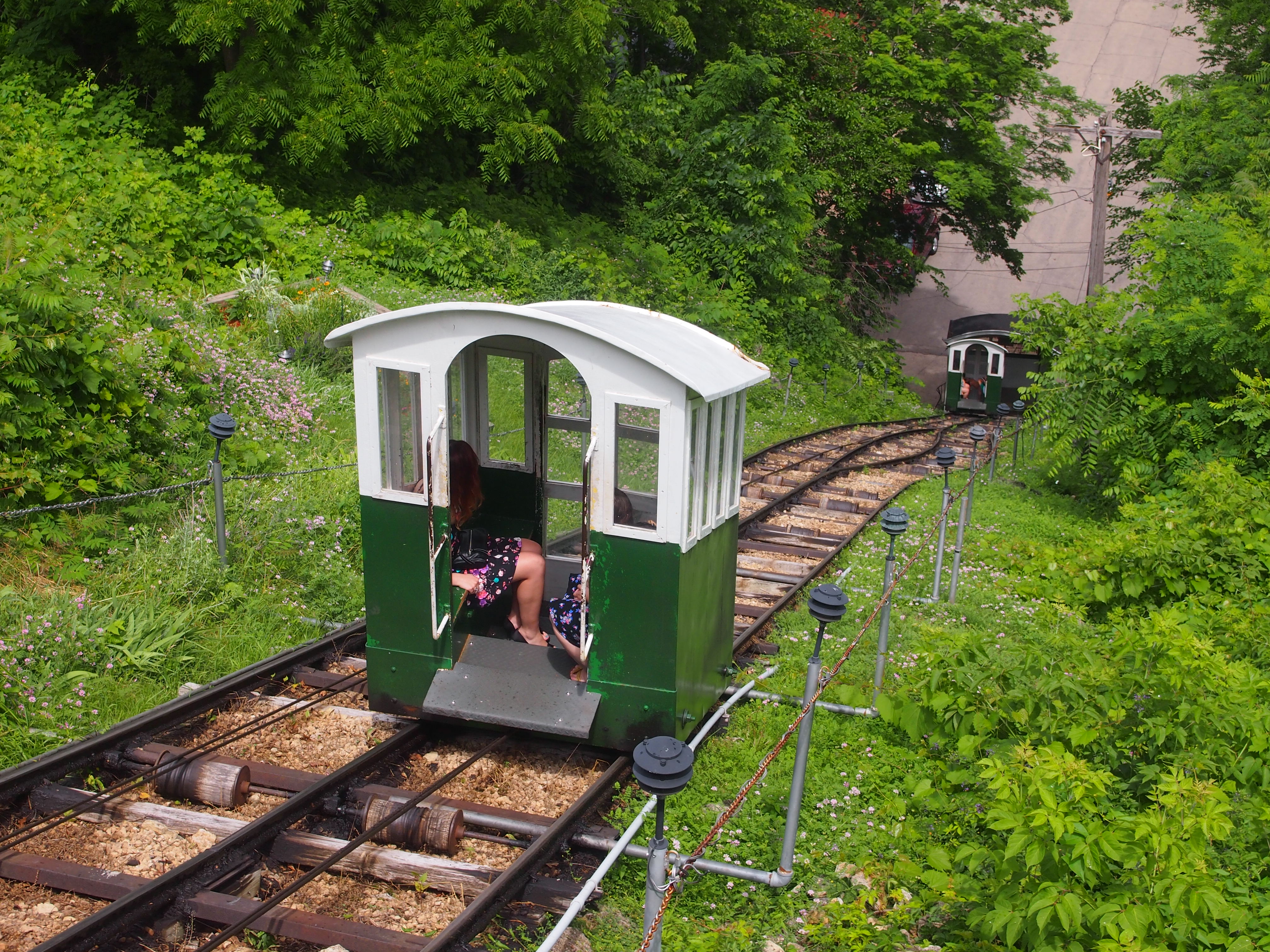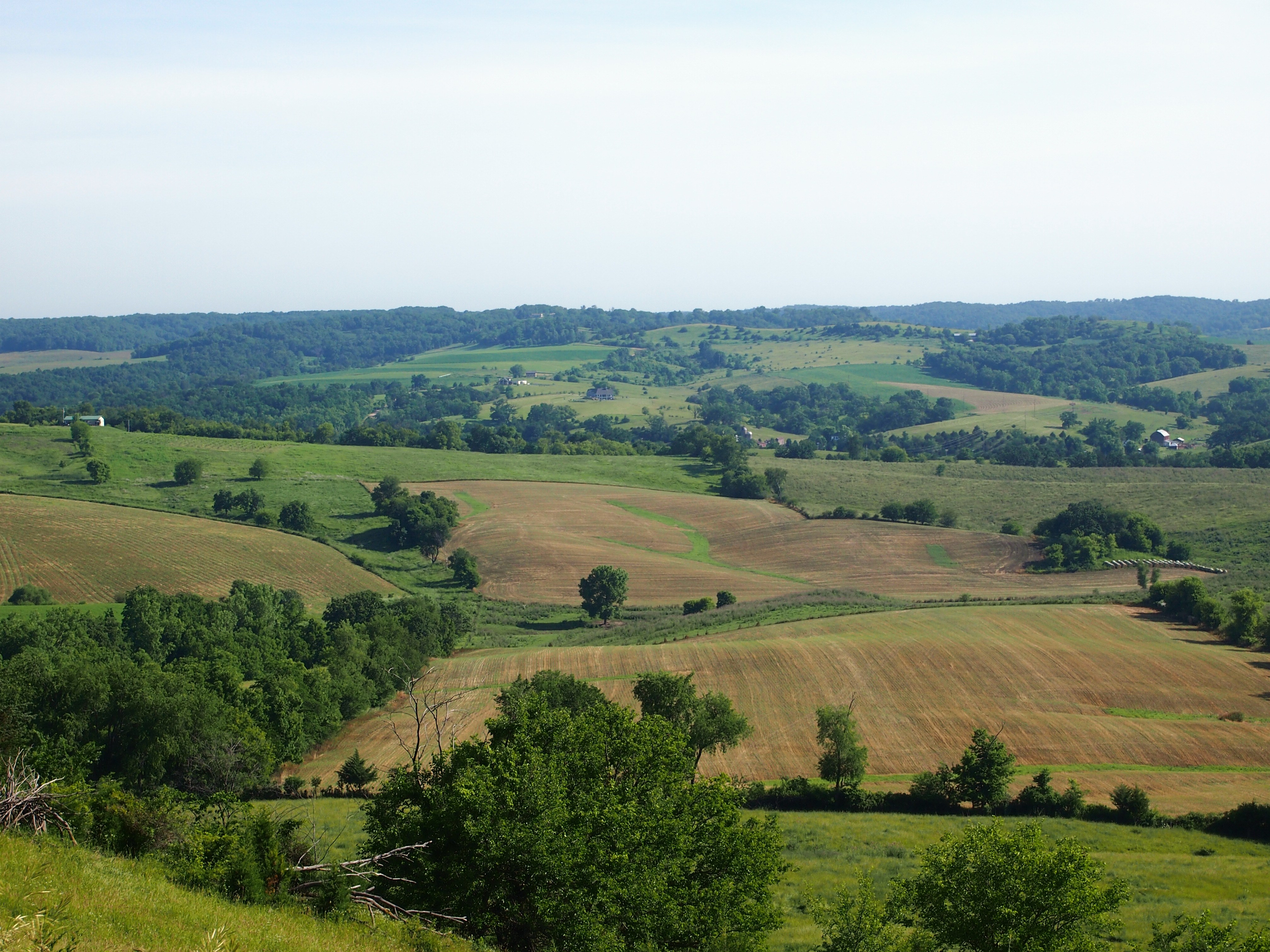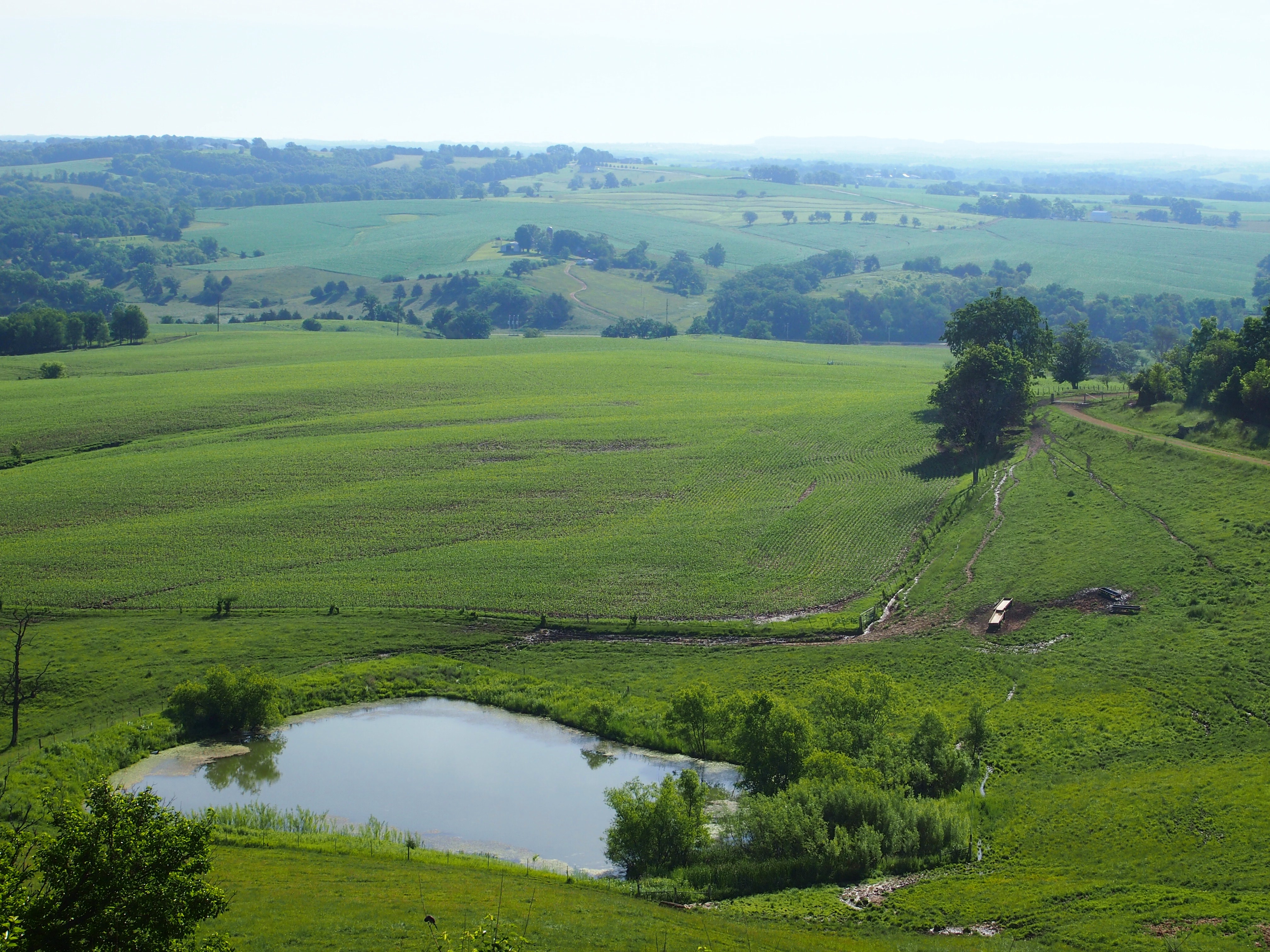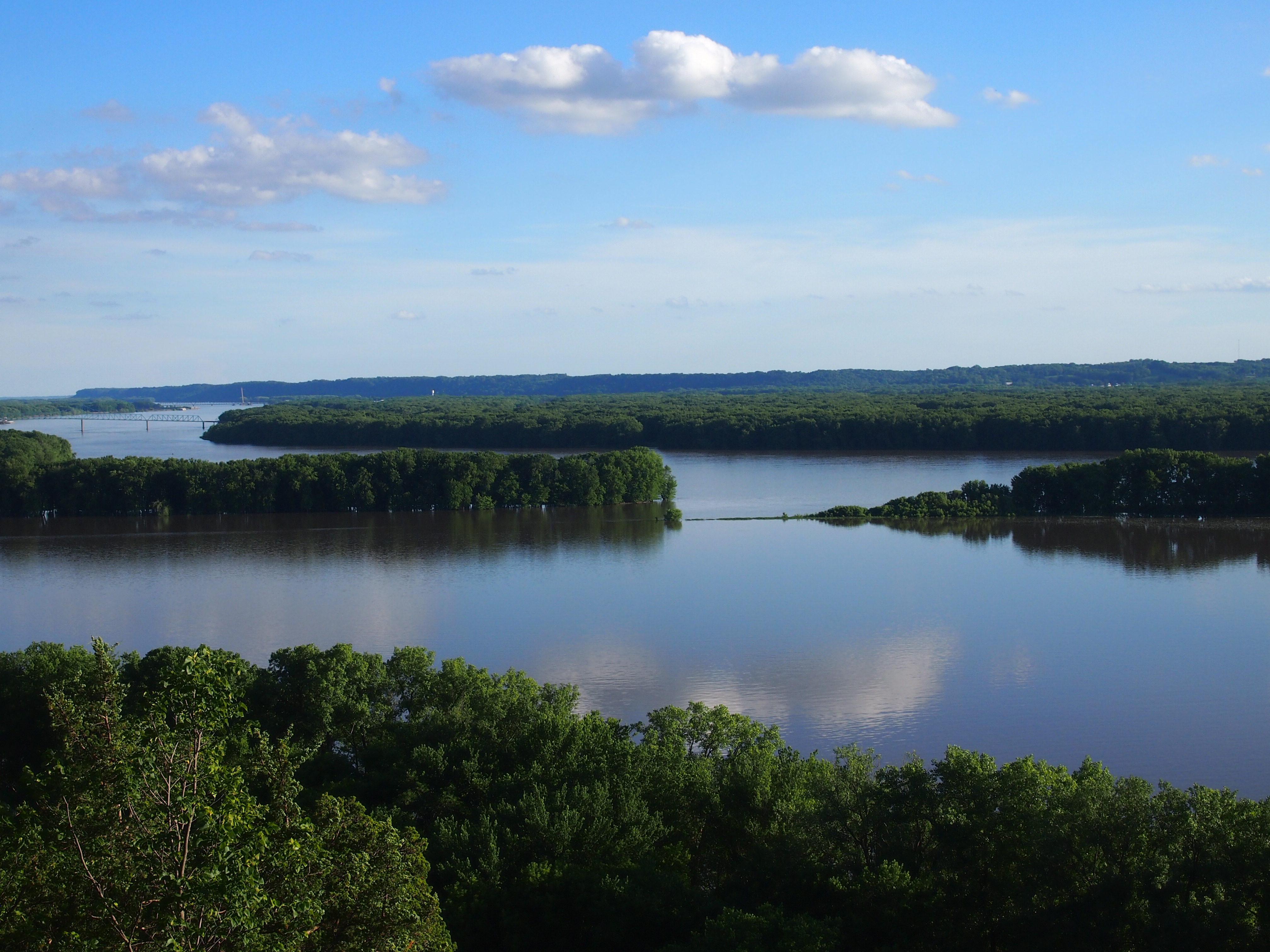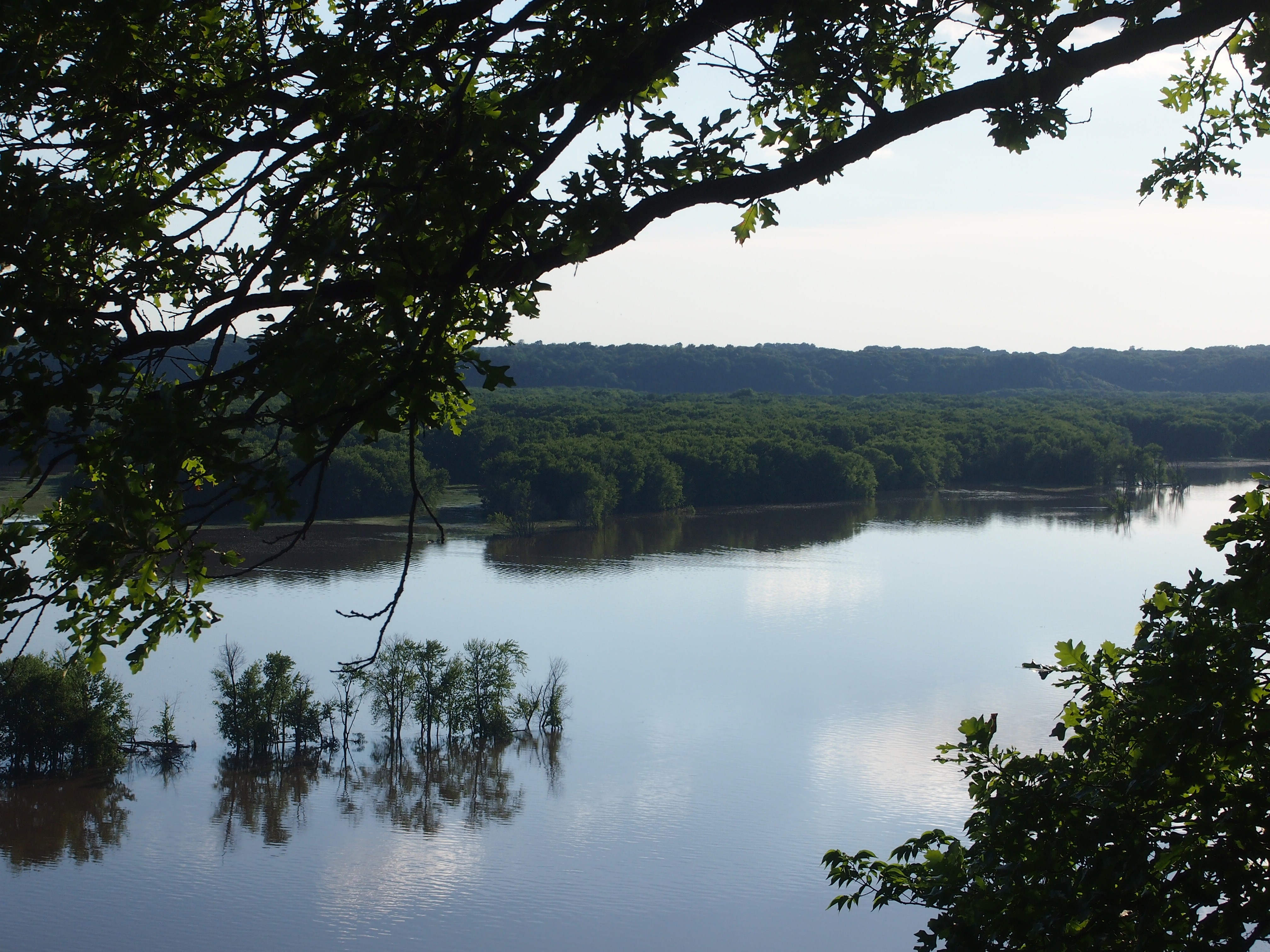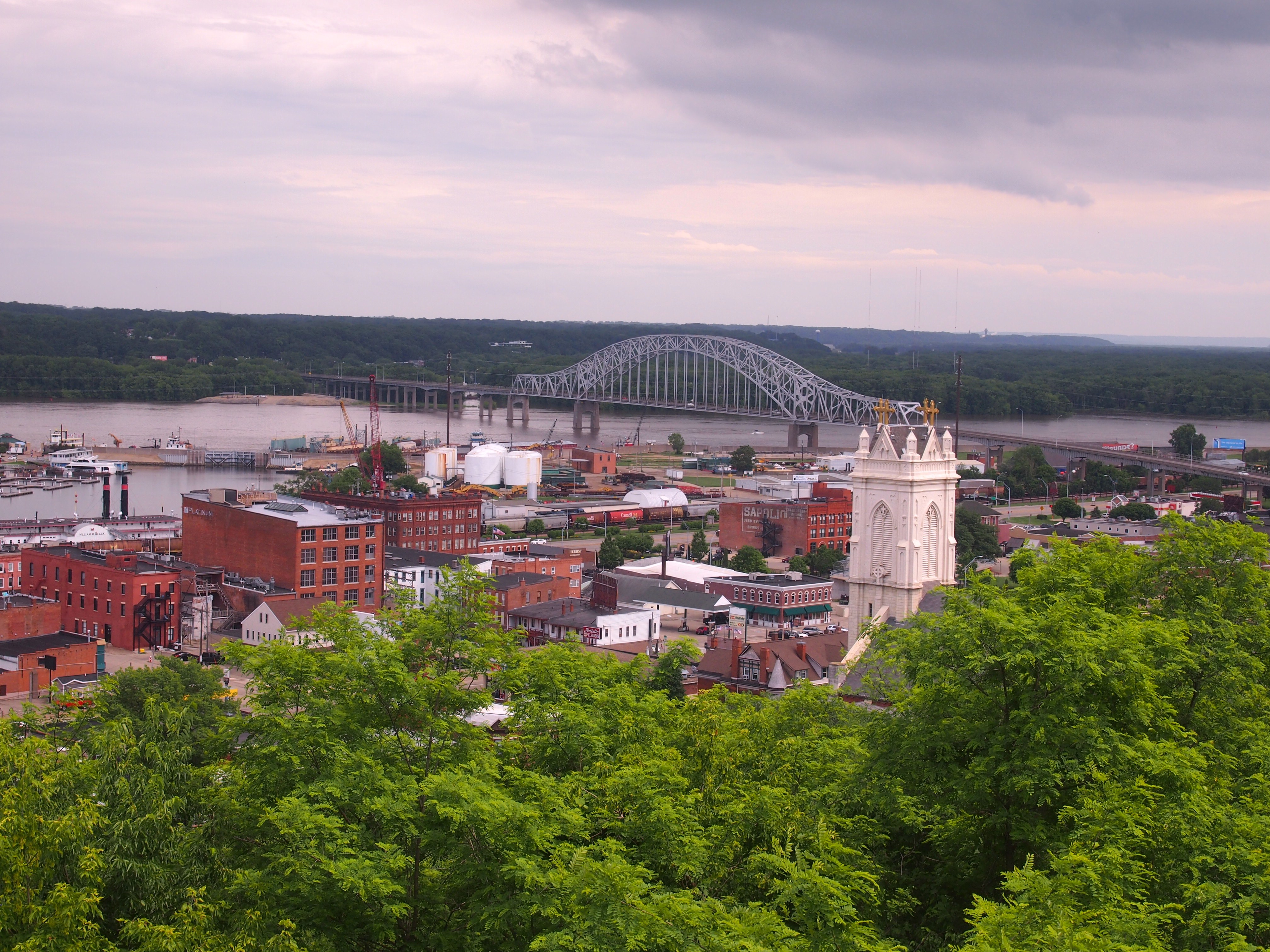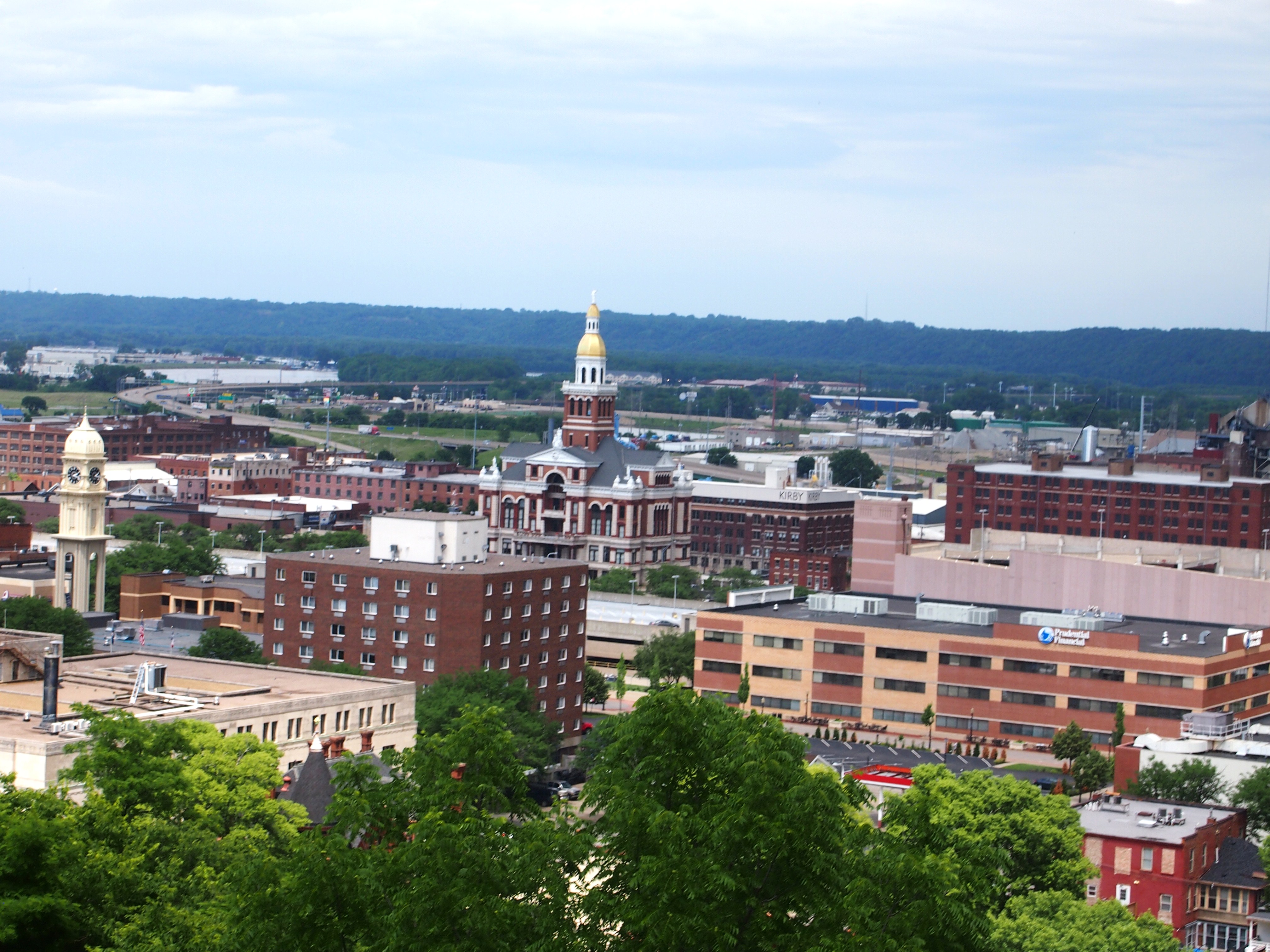In early August 1978, I took a bus from San Antonio to Stevens Point, Wisconsin, and back again, along with a busload of other high school students to attend the Mu Alpha Theta national meeting in that (seemingly) remote Wisconsin outpost. The route took us through Des Moines, which I only knew as the capital of Iowa from maps. We didn’t stop, but one of the teachers on the expedition, the admirable Paul Foerster, pointed out the Iowa state capitol as we went by – and noted the gilding on the dome, which he said was a very thin layer of gold. Indeed it is.
In later years, I figured I’d go back someday and take a look at the capitol more closely. Somehow, I never got around to it until July 12, 2014, our first day of driving, when I made a point of stopping there. We arrived just after 4 on that Saturday afternoon, right after the building closed (that’s what we get for having a leisurely lunch in Coralville). Ah, well. I had to make do with looking around the grounds, and seeing the magnificent gold dome up close from the outside.
The building was completed in 1884, repaired after a major fire in 1904, and exterior refurbishment was done in the last years of the 20th century. “The commanding feature is the central towering dome,” according to the State of Iowa (whose text, I note, was copied directly to Wiki). “This is constructed of steel and stone and covered with 23 carat gold. The gold leafing was replaced in 1964-1965 at a cost of $79,938.”
Since the capitol itself was closed, we took a look around the immediate vicinity. We would have done that anyway. The grounds sported a good number of memorials, as capitol grounds usually do. Including the modest and not-very-picturesque, such as this homely slab.
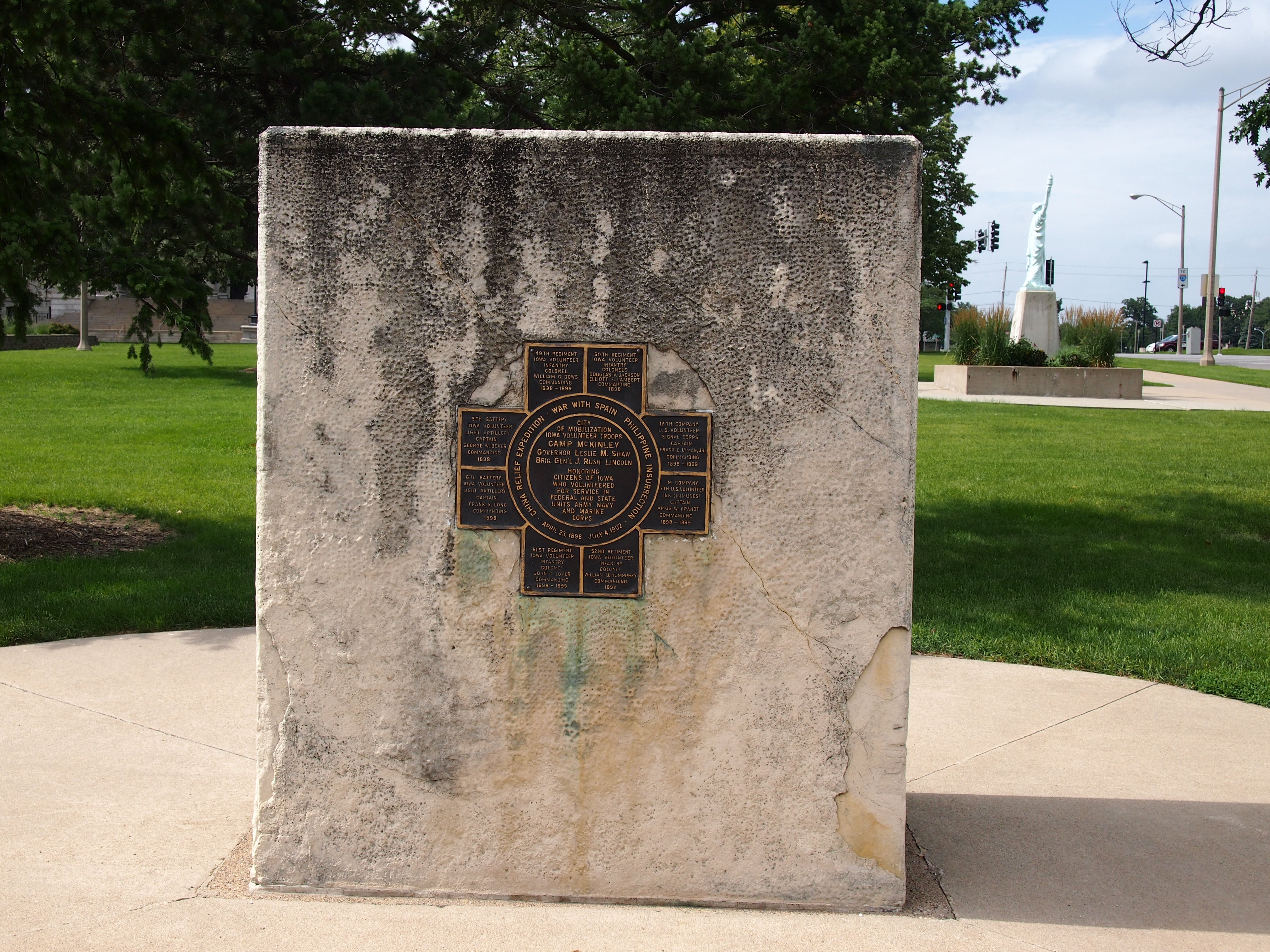 It memorializes the Iowa men of the China Relief Expedition (you know, 55 Days in Peking), the War with Spain, and the Philippine Insurrection, and is dated April 23, 1898, to July 4, 1902.
It memorializes the Iowa men of the China Relief Expedition (you know, 55 Days in Peking), the War with Spain, and the Philippine Insurrection, and is dated April 23, 1898, to July 4, 1902.
This is a much larger memorial. It is, of course, the state Civil War memorial, or to use its correct title, the Iowa Soldiers and Sailors Monument.
The Iowa Department of Administrative Services tells us that “the State of Iowa erected this monument, funded partially by refunded war taxes, to commemorate Iowans who fought during the Civil War. The monument was approved in 1888, the cornerstone was laid in 1894, and the structure was completed two years later. Because formal controversy developed over the location and artistic details of the monument, nearly 50 years passed before its dedication in 1945.”
I didn’t realize it looking at the thing, but the equestrian statues – two of the four are visible in my picture – represent actual individuals: Marcellus M. Crocker, who led troops at Shiloh, Corinth, and Vicksburg; John M. Corse, who joined Grant at the siege of Vicksburg; Grenville M. Dodge, who built railroads to support Grant and accompanied Sherman on the March to the Sea, and Samuel R. Curtis, commander of the Union Army at Pea Ridge.
The other figures are allegorical, such as Victory at the top, common soldiers and sailors nearer to the base, and Mother Iowa.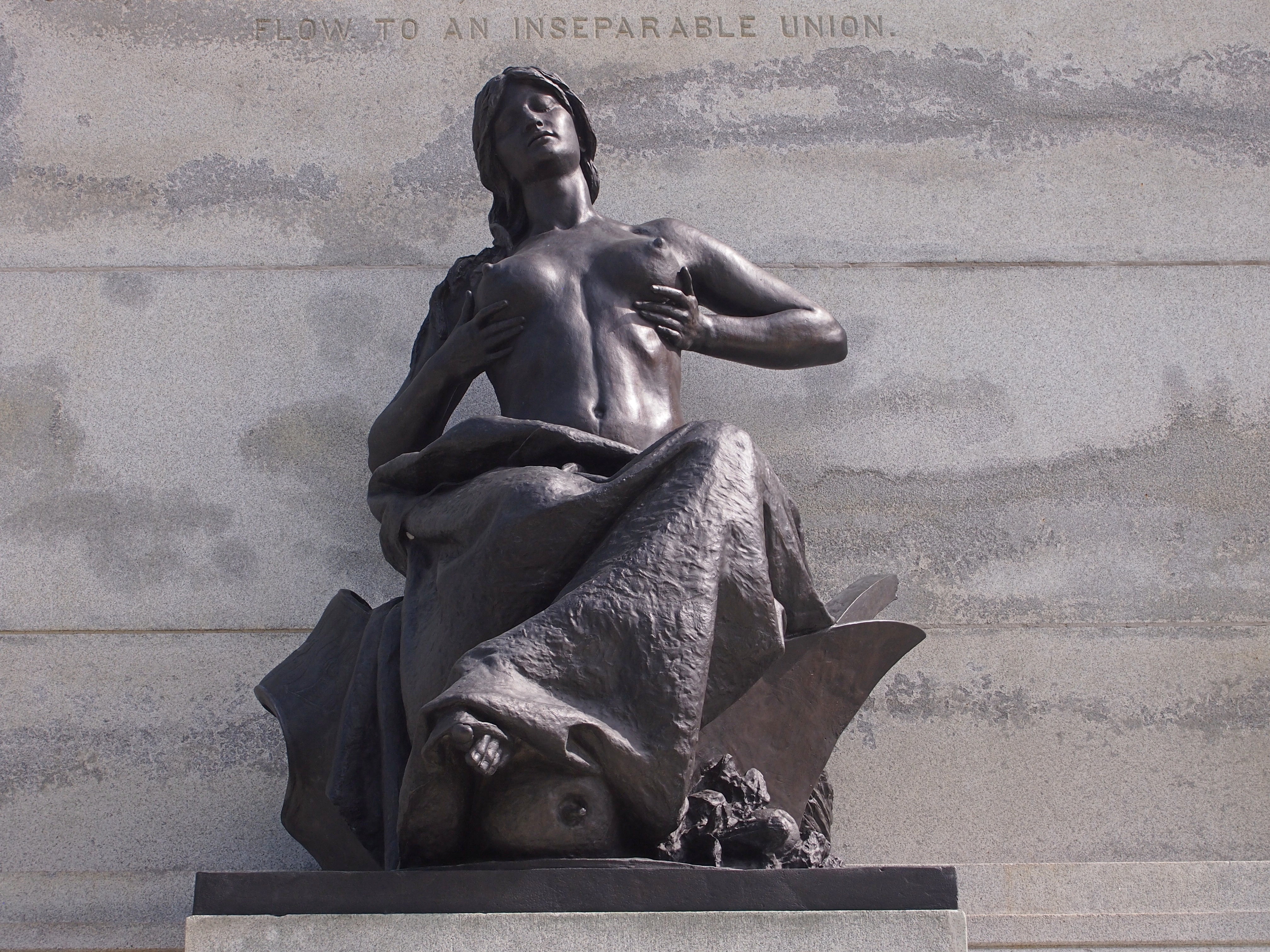
Let’s just say that Mother Iowa, offering nourishment to Iowans in a way that only a mother can, looks a little odd to modern eyes.
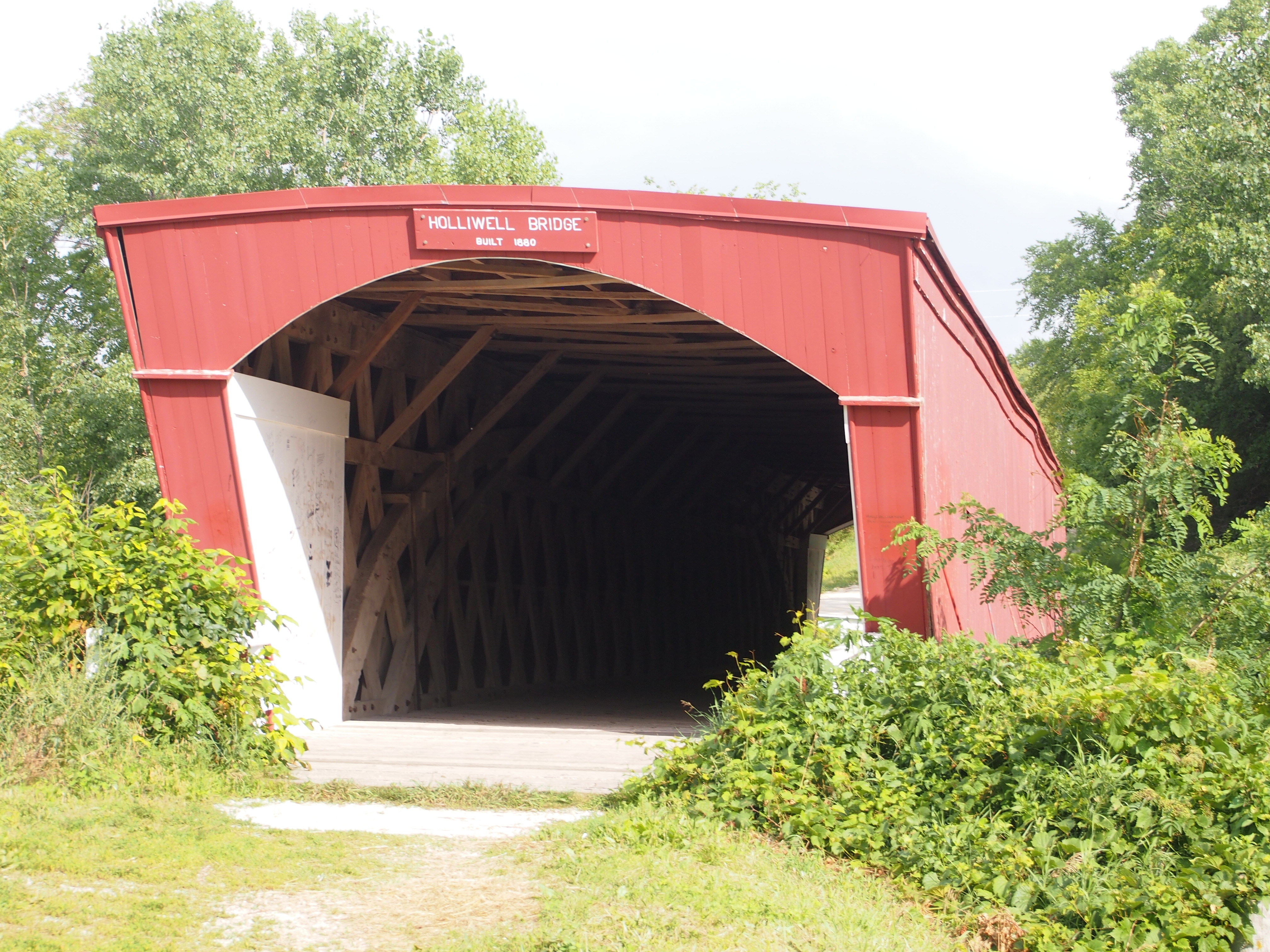 Ann stayed in the car for this one. The structure’s a little newer than Cutler-Donahoe, built by Benton Jones in 1880 and renovated in 1995 (on the occasion of filming the movie, I guess, but my sources don’t say so explicitly).
Ann stayed in the car for this one. The structure’s a little newer than Cutler-Donahoe, built by Benton Jones in 1880 and renovated in 1995 (on the occasion of filming the movie, I guess, but my sources don’t say so explicitly).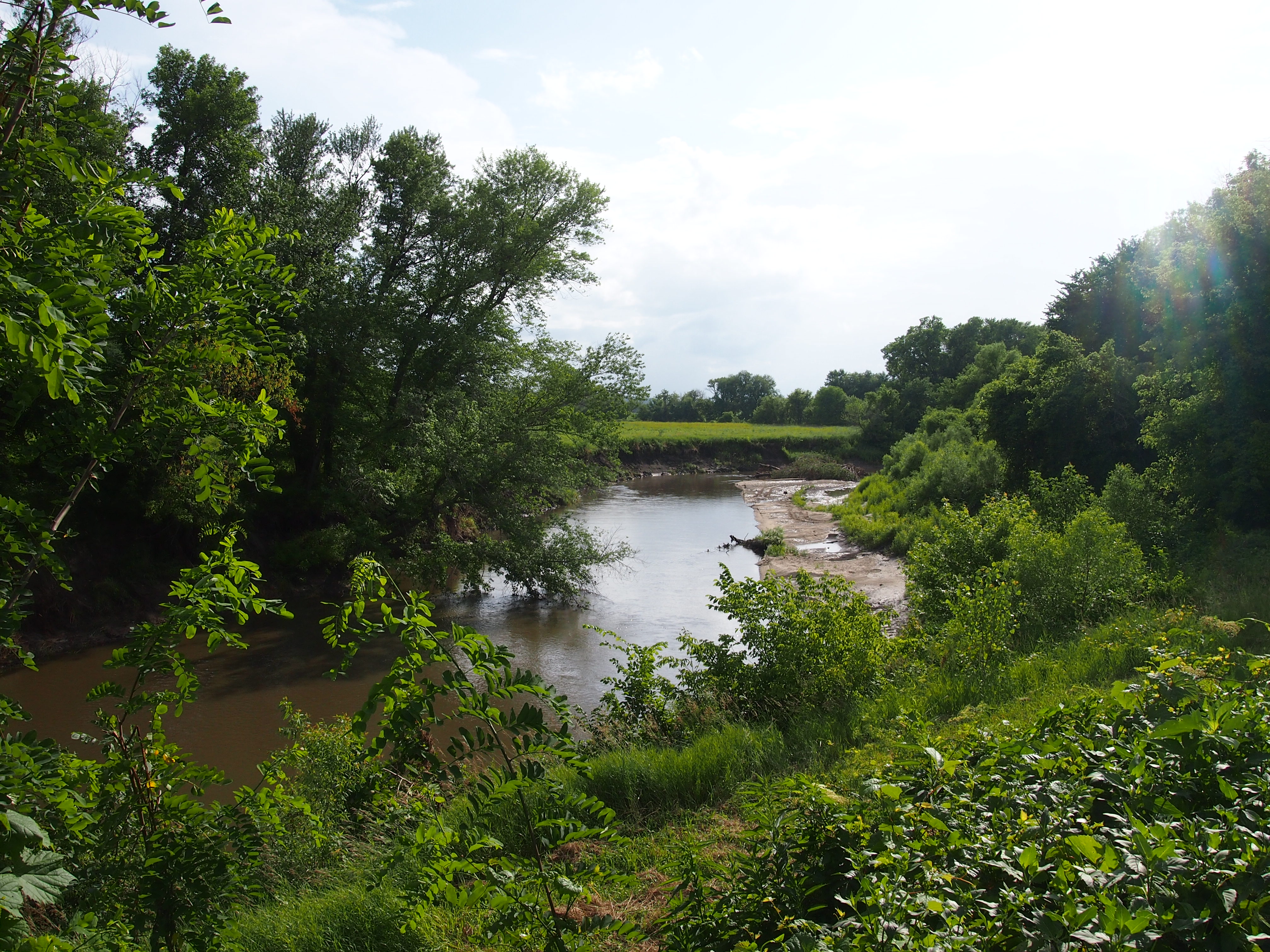 This is the view from the north end of the bridge, looking out on the Middle River, a tributary of the Des Moines River that runs through the county. Iowa’s nice and lush this year.
This is the view from the north end of the bridge, looking out on the Middle River, a tributary of the Des Moines River that runs through the county. Iowa’s nice and lush this year.